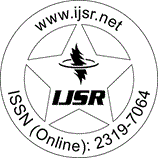Downloads: 1 | Views: 19
Research Paper | Urology | India | Volume 14 Issue 2, February 2025 | Popularity: 4.1 / 10
Surgical Management of Various Adrenal Disorders: Our Institutional Experience
Kishan Patel, Manish Gupta, Hotilal Gupta, Nripesh Sadasukhi, Ashish Sharma, Trilokchand Sadasukhi, Subhash Jat
Abstract: Background: Minimally invasive adrenalectomy has emerged as the gold standard for managing various benign and malignant adrenal disorders. With advancements in laparoscopic techniques, the procedure is now being employed for larger adrenal masses (>6 cm), despite challenges related to tumor size, distorted anatomy, and risk of malignancy disemination. Aim: To evaluate the efficacy and outcomes of minimally invasive procedure like laparoscopic adrenalectomy (LA) or robotic adrenalectomy in comparison to open adrenalectomy (OA), particularly in managing large adrenal tumors. Methods: A prospective analysis of 46 adrenalectomies performed on 42 patients with adrenal masses of varying sizes was conducted. Patients underwent preoperative evaluation, including hormonal studies, radiological imaging and risk assessments. Intraoperative and postoperative outcomes including blood loss, operative time, conversion rates, hospital stay morbidity and mortality were recorded. Tumor histopathology and patient follow - up data were also analyzed. Results: The mean tumor size was 7.03 cm (range: 5?15 cm). Conversion to open surgery occurred in two cases (2.17%), primarily due to bleeding and technical difficulties. The average blood loss was 112 mL, and mean operative time was 144 minutes. Postoperative hospital stay averaged 4 days. Among the 46 adrenalectomies, 32 patients had functional tumors. Histopathology revealed malignancy in three cases (6.52%). No major postoperative complications were observed, and patient follow - up showed favorable outcomes with no recurrence in benign cases. Conclusion: Minimally invasive adrenalectomy is a safe and effective approach for adrenal disorders, including large tumors or masses. It offers significant benefits, such as shorter hospital stay, reduced blood loss, minimal postoperative pain, early recovery, better cosmesis. Tumor size alone should not contraindicate a minimal invasive approach, provided preoperative evaluation and surgical expertise are optimized. Adherence to oncologic principles and teamwork is crucial to achieving successful outcomes. Minimally invasive adrenalectomy remains the gold standard for a wide range of adrenal pathologies. Robotic adrenalectomy has added advantage of magnified view, better tumor handling, low post operative pain and minimal scar.
Keywords: minimally invasive adrenalectomy, laparoscopic adrenalectomy, robotic adrenalectomy, adrenal tumors, surgical outcomes
Edition: Volume 14 Issue 2, February 2025
Pages: 152 - 154
DOI: https://www.doi.org/10.21275/SR25129220445
Make Sure to Disable the Pop-Up Blocker of Web Browser
